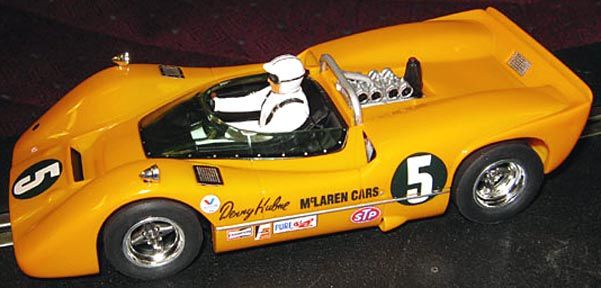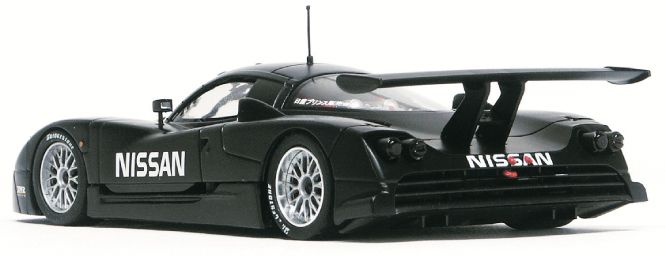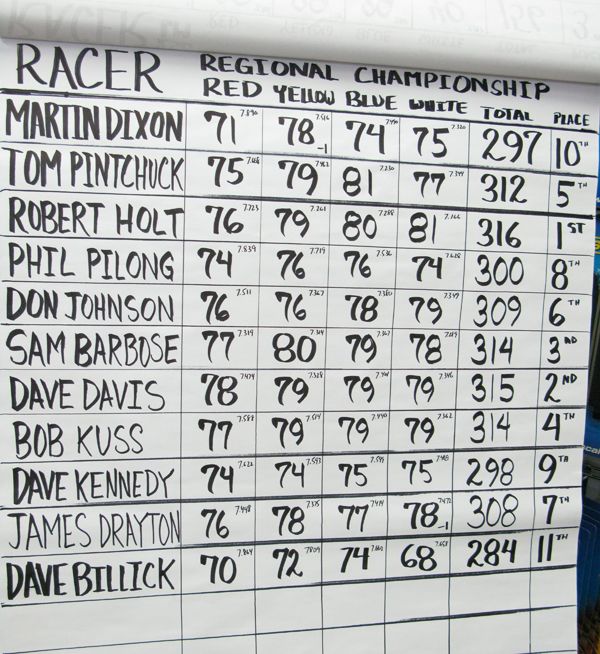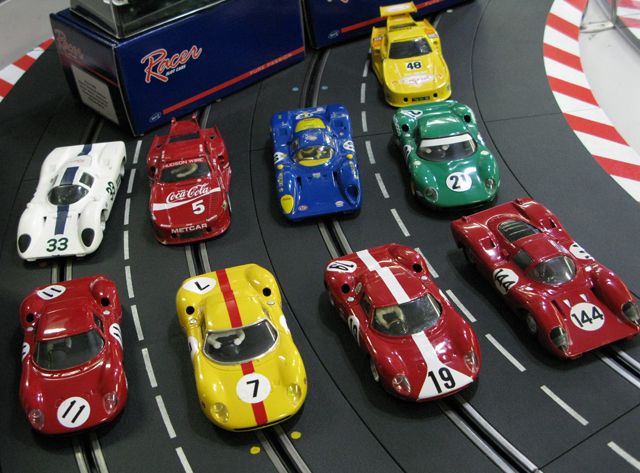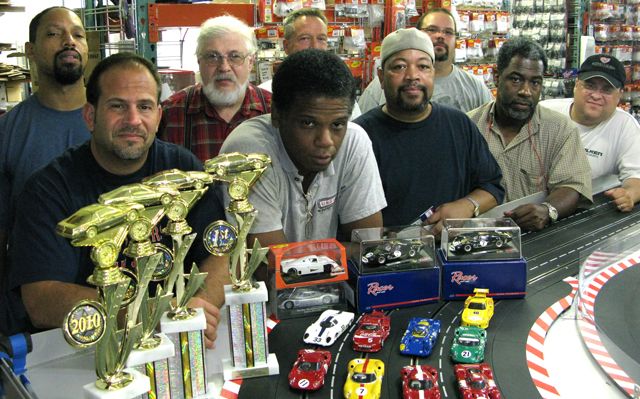 Criccrac's Facebook page is showing the new Pastrana Subaru.
Criccrac's Facebook page is showing the new Pastrana Subaru.
Tuesday, August 31, 2010
Monday, August 30, 2010
Looking For Totally Butterfly Tattoo Designs?Unique
Tattoos are becoming more and more popular throughout the world, and even more so in the United States and Europe. The hottest celebrities are now seen sporting the latest and trendiest tattoos. In fact, the trend seems to be toward more tattoos, not fewer.
Butterfly Tattoo
There are countless types of tattoos, and there is no need to fret when trying to decide on the best design for you. Among the most popular modern designs are the, dragons, tribal patterns, crosses, henna instead of ink, and other designs related to religion – there is a nearly endless supply of potential designs.
Rolls-Royce's baby scooped Beauty
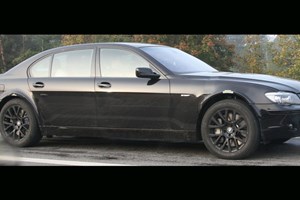
BMW has started testing its new baby Rolls-Royce – and our spies were on hand to capture the moment this mule took to the roads around Munich. Size is relative, of course; this might be the smallest Rolls for generations, but it will still dwarf the majority of cars on the road.
Nestling under the disguise of this long-wheelbase 7-series lie the innards of the baby Roller, codenamed New Generation Saloon. The smaller Rolls will slot beneath the Phantom uber-saloon in the range and officials talk of it as ‘a Silver Shadow for the 21st century’. Strip away the BM bodywork, and the baby Rolls will look like the car depicted in our artist’s impression above.
Classic four-door proportions
CAR Online understands the NGS has a classic four-door silhouette that stretches to five-and-a-half metres long. Even Rolls-Royce owners downsizing won’t put up with cramped cabin conditions after all. Will it have the suicide – sorry, coach – doors so beloved of £265,000 Phantom owners? Nobody is certain yet, but it seems likely if customers are to be lured out of their top-spec BMWs, Mercedes and Bentleys.
Analysis of our exclusive scoop shots reveals a platform whose track is noticeably wider than a 7-series’, and the raised ride height is another indicator of what lies beneath this BM body. Check out the size of the brake discs too – required to halt a couple of tonnes of luxury car. The unknown at this stage is the material used to build the NGS; the Phantom’s aluminium spaceframe could be deemed too expensive for the smaller, more affordable car.
Many of the next-gen 7-series’ underpinnings will be used on the secret new Rolls-Royce, and a BMW-derived V12 is likely to provide the propulsion. In the longer run, we’d expect the British luxury brand to dip into parent firm BMW’s hybrid technology; not that Rolls-Royce owners worry unduly about their fuel bills - but they do worry about what people say about them. Even the world’s most exclusive uber-brands will need to face up to their environmental responsibilities in the 21st century.
Inside the baby Rolls
The inside will be as luxurious as you’d expect of a Rolls-Royce; the company’s artisans employ know-how and materials from the world of yachts and bespoke furniture to craft the sumptuous cabin of the Phantom. We hear there will be a high level of pampering in the smaller Rolls, with quality wood, soft hide and opulent paint choices aplenty.
But the NGS is aimed at a younger buyer than the Phantom, so this cabin will be available with much high-tech gadgetry. Expect radar-based cruise control, auto-shutting doors and fibre optic headlining for that star-studded sky effect, and there will be a new generation of digital read-out screens that are immune from bright sunlight and problems with shadows.
Baby Rolls: the timeframe
Expect a concept car to hail from Rolls’ Goodwood HQ at some point later in 2008 or, more likely, in 2009. This year the company is busy concentrating on the new Phantom Coupe which launches at the 2008 Geneva Motor Show, and the smaller car won’t arrive in production form until late 2009.
Prices aren’t fixed yet, but the baby Rolls-Royce won’t wear a truly bargain price. It will be significantly cheaper than the quarter-million pound Phantom and its £307,000 Drophead Coupe convertible sibling – but we’re still talking about an entry price of some £175,000.
But when it does finally go on sale it should swell the production figures at Goodwood significantly, with BMW targeting around 2000 units a year. A second assembly line is being installed to cope with the upshift.
Thursday, August 26, 2010
2 New Racer Ford P68's-Slotlandia
 The two new Racer Ford P68's are to "celebrate next "Top Racer" race at Slotlandia event in Milan from September 24th to 26th."
The two new Racer Ford P68's are to "celebrate next "Top Racer" race at Slotlandia event in Milan from September 24th to 26th."RCR S01/A - race number 11
RCR S01/B - race number 21
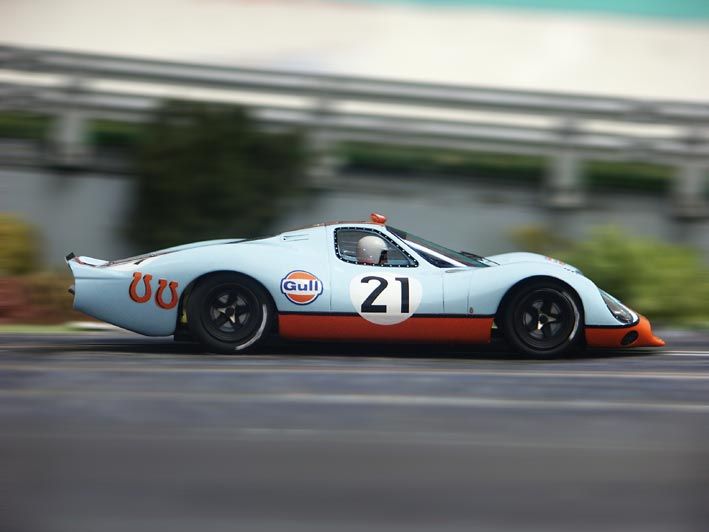











Sunday, August 22, 2010
New releases from Carrera arriving in North America soon
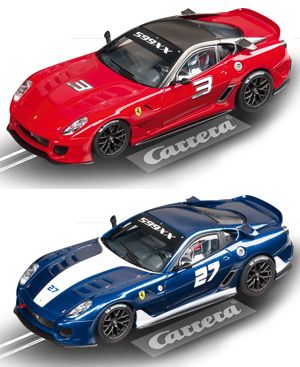 23748-Dig 124 Chevy Corvette
23748-Dig 124 Chevy Corvette25171-EV Ferrari Racing
27332-EV Dodge Charger Daytona
27333-EV 41 Willys Silver
27334-EV 32 Ford "Fire Engine"
27335-EV Ferrari 599XX Geneva
27336-EV Ferrari 599XX Race
30147-DIG 132 Ferrari Competition-Set
30514-DIG 132 Audi LeMans Series
30517-DIG 132 Red Bull Formula 1 car
30522-DIG 132 Porsche 917/30 "Cam2"
30526-DIG 132 Plymouth Superbird
30528-DIG 132 Dodge Charger
30532-DIG 132 Ferrari 599XX " Geneva "
30533-DIG 132 Ferrari 599XX "Race"
30142-DIG 132 Pro GT-Set
30478-DIG 132 Nissan GT-R
30523-DIG 132 McLaren "Gulf Racing"
25165-EV Night Racers-Set
27297-EV Nissan GT-R "Motul"
27327-EV Porsche 917/30 "Sunoco"
Wednesday, August 18, 2010
AMA Superbike races at NJMP
Tuesday, August 17, 2010
Carrera Audi R8 LMS – Model no. 27321

In 2009 Audi introduced the R8 LMS. Intended to be more than just another German supercar – it was also intended to be Audi's standard bearer in GT3 racing by way of factory supported privateers. While 2009 was intended to be a development year, this car quickly racked up victories in the ADAC, FIA, Italian, and Belgian GT3 series. That's 23 victories and 1 championship for a machine that's barely a year old.

Carrera brings us a model of the ADAC GT3 version of the R8 LMS as part of their Evolution line. Out of the box the silver and black ABT Sportsline Nurburgring livery looks stunning. This car sports the race number 100 in honour of Audi's 100th anniversary as a car maker. The lines on this model are all very crisp with no overspray and sharp tampo. Carrera have done a very good job of capturing the feel of the 1:1 car with this model. The presentation is helped by more finely rendered details: for example the wing supports aren't as chunky as what I'd normally expect from Carrera. Surprisingly this car is not fitted with lights.

Included with the car is an extra guide flag, set of mirrors, and braids – something all slot manufacturers should emulate. Unfortunately the shorter/thinner guide keel that is compatible with Scalextric Sport track is not included. No problem – I just pulled the long keel out of the Audi and replaced it with the 'Special' keel (part #85309) from a Carrera Capri in my collection. Carrera has done some work on their guide system offering approximately 160° of rotation which is quite an improvement over the approximately 90° offered by their previous setup. This guide is also self centering which makes for quick reslots after an off.

Under the hood Carrera has left lots of room on the chassis of the Audi R8 LMS courtesy of the pan interior and flat chassis. This is great for anyone who wants to convert the car to digital, or to non-magnet running as there's lots of room for either the chip or lead weight. It's nice to see brass bushings front and rear though there's significant play owing to the knurled axles used. One interesting feature I noticed in testing is the ability to bypass the direction switch courtesy of the modular electrical connections used between the switch, guide, and motor. The guide and motor connections can be hooked up directly and the now redundant switch can be easily removed by just removing 1 screw. While the switch only weighs 1g, it's removal does provide and excellent spot to place lead for non-magnet tuning.

On my 22m test track the Carrera Audi R8 LMS offered few surprises. The dual magnet design offers decent magnetic downforce (137g) without being overly stuck down. The car could be slid in the corners but overall was quite controllable. The stock plastic wheels proved to be fairly straight and true, and the stock rubber tires offered decent grip. Racers wanting to get more out of this car should consider gluing the tires to the rims as the fit was a bit loose.
The drivetrain did seem a little tight on my test car and I traced this to the pinion rubbing against the shoulder of the crown gear. I'm sure with some running this car will eventually break in, or with a bit of work the pinion could be pushed onto the motor shaft just a bit further allowing the rear axle to spin more freely. Even so, the Carrera Audi R8 LMS is in the zone with a few other current GT racers:
6.875s Scalextric Ford GT
6.992s Scalextric Aston Martin DBR9
7.255s Scalextric Maserati MC12
7.386s Scalextric Ferrari F430
7.435s Carrera Chevrolet Corvette C6R
7.436s NINCO Lamborghini Gallardo
7.529s NINCO Porsche 997
7.688s Carrera Audi R8 LMS
8.372s SCX Morgan Aero 8
The Carrera Audi R8 LMS performed respectably without the traction magnets in place lapping my test track in 10.6s. Magnets can be removed from the top side of the chassis though the body must be taken off to do so. Without traction magnets this car demonstrated no hop under power and could corner with predictability. Non-magnet performance was no doubt aided by the car's 100g overall weight as well as the wide range of rotation provided by the current guide design. Upgrading the factory tires to Super Tires 1410C silicone tires dramatically reduced the non-magnet lap time to 9.194s. Further gains in performance can most likely be realized by getting a slightly looser fit between the pinion and crown gear, adding lead ballast, reducing play in the axle bushings, and by gluing the tires to the rims and truing them.
Racers counting on out of the box magnet-car performance will not be disappointed. The car can be made competitive with only minor modifications. Those who prefer running their cars without magnets have a good platform to work with though will have to look at reducing this car's overall weight to make it competitive.
Thank-you to Carrera USA for the opportunity to test this car, Slot Car Corner Canada for the chance to evaluate a set of Super Tires, and to Mini Grid in Toronto for the use of their track.
-Van LaPointe
Saturday, August 14, 2010
Race Day at Bud's HO
Bud's HO
2141 Crompond Road
Cortlandt Mannor, NY 10567
Phone / Fax (914) 737-4070
Store Hours:
Mon - Closed
Tue - Closed
Wed - 11 - 7
Thr - 11 - 7
Fri - 11 - 7
Sat - 11 - 7
Sun - 11 - 7
Thursday, August 12, 2010
Carrera D132 Porsche 917/30 (model #30521) - Carrera Evolution M20 (model #27328) - Carrera D132 McLaren M20 (model #30524)









The 917/30 and Black Label cars I tested are both digital – and my test track is analog - so I needed to be able to test the two D132 models in analog mode. Converting them couldn’t have been easier: I placed the D132 car on the track, I blipped my controller three times, flicked the switch under the car, and the Digital 132 cars were good to go. While Can-Am cars of this era never ran with lights, the Black Label car is equipped with an orange glow in the exhaust when the car is under power. This feature still works with the car in analog mode. A small yet subtle touch that looks very cool as the car is racing along.
On track both McLarens and the Porsche both ran well. The current guide design aside from allowing for an interchangeable keel offer approximately 170 degrees of rotation. The two traction magnets each car was equipped with made them easy to drive at speed though they would step out if pushed in the corners. I brought a few other Can-am models to the test track with me that day in order to compare lap times. Here’s how they stack up:- 6.088 NSR Porsche 917K
- 6.107 Revell/Monogram Chaparral 2A
- 6.590 Slot.it Alfa Romeo T33/3
- 6.703 Carrera D132 Porsche 917/30
- 6.759 Carrera D132 McLaren M20
- 6.788 Carrera Evolution McLaren M20
- 6.906 Slot.it Chaparral 2E
- 7.124 Fly Porsche 908 Flunder
- 7.812 Fly Porsche 917PA
- 8.855 HSRR McLaren M8D
Even though the Porsche and McLaren have different motors – the Porsche a standard S-can and the McLaren a slim FF can – the cars are very comparable in performance.
After running the Carrera cars with the magnets in place, I decided to remove them and see how they ran without. Both cars have two longish bar magnets mounted in the chassis. Carrera mounts them inside the chassis on these cars as opposed to attaching them to the bottom of the chassis in plastic housings held in by screws. To get them out, the body had to be removed as well as the motor, rear axle, and digital chip assembly.
- 10.268 Carrera D132 McLaren M20
- 10.394 Carrera D132 Porsche 917/30
- 10.416 Carrera Evolution McLaren M20

Thank-you to Mini Grid in Toronto for the use of their track.
Highest turnover Toyota


Sole agent (ATPM) PT Toyota Astra Motor scored the highest sales figures in July 2010 with sales reaching 27 699 units, up 6.3 percent from the previous month, so sales for seven months to reach 166 057.
"The automotive market growth in both passenger and commercial classes in the middle of this year to positive signals for industrial growth and economy of the homeland," said president director of PT Toyota Astra Motor (TAM), Johnny Darmawan, in a press release here on Tuesday (12 / 8) .
Johnny says, the annual automotive exhibition, such as Indonesia International Motor Show (IIMS) and the approach of Idul Fitri holiday period encourages the domestic automotive market. That, he acknowledges, push Toyota sales spike of 64 percent in January-July 2010 compared to same period last year. according to him, the biggest sales growth in July was in the sedan segment with an increase of 15.2 percent compared to the previous month. At the July sales reached 1766 units of the Toyota sedan, which comes from selling small sedan Toyota Vios and Limo ride as much as 1407 units or 23 percent.
While the growth in class multi-purpose car (MPV), which became mainstays such as the Toyota Avanza TAM grew 6.1 percent with sales amounting to 14 020 units and Innova rose 12.4 percent with sales of 5545 units. Toyota's total MPV sales alone reached 19 589 units or an increase of approximately 7.7 percent from June 2010.
In class sport utility vehicle (SUV), Toyota Fortuner sales figures through more than 1,000 units, with sales during July of 1018 units or an increase of 4.4 percent over the previous month. Overall, Toyota 4x2 SUV scored an increase of 1.4 percent with sales of 2.799 units.
In total, the class of passenger vehicles Toyota has scored an increase of 6.1 percent with total sales volume of 25 722 units during July 2010. (AST / Ant)
Wednesday, August 11, 2010
Porsche Showcase - Official Porsche Design Drivers Selection Producs
Pikes Peak Porsche video... hold on!
Tuesday, August 10, 2010
US version of TopGear?
And BTW, why the heck are they all wearing the same shirt?!?!?
Monday, August 9, 2010
Carrera Chevrolet Dekon Monza – IMSA 1977 (model #27266)
 The Dekon Monza was a competitor in the GTO class of IMSA’s Camel GT series during the 70s. Chevrolet initially intended the Monza to be the first production car powered by its Wankel engine. Since that engine never made it into production a V8 was one of the available powerplant options used in place of it. In late 1974 Chevrolet provided several examples of the Monza to Dekon for conversion into racecars. The car was designed by Lee Dykstra and Horst Kwech (the D and K in Dekon). This race car was one of the first to use CadCam as part of its design and manufacturing process. Powered by a 600hp fuel injected V8 and blessed with near perfect 50/50 weight distribution the car was destined for success on the racetrack. No easy feat for what started out as a grocery getter when its competition consisted of thoroughbred racing machines from the likes of BMW, Porsche, and Ferrari.
The Dekon Monza was a competitor in the GTO class of IMSA’s Camel GT series during the 70s. Chevrolet initially intended the Monza to be the first production car powered by its Wankel engine. Since that engine never made it into production a V8 was one of the available powerplant options used in place of it. In late 1974 Chevrolet provided several examples of the Monza to Dekon for conversion into racecars. The car was designed by Lee Dykstra and Horst Kwech (the D and K in Dekon). This race car was one of the first to use CadCam as part of its design and manufacturing process. Powered by a 600hp fuel injected V8 and blessed with near perfect 50/50 weight distribution the car was destined for success on the racetrack. No easy feat for what started out as a grocery getter when its competition consisted of thoroughbred racing machines from the likes of BMW, Porsche, and Ferrari.  Carrera’s Dekon Monza is a model of chassis number 1004 as campaigned by Tom Frank in both Camel GT and Trans Am during the late 70s. This car looks the business with its massive rear wing, cow catcher air dam, and monster fender flares. Carrera did a great job on the tampo of this car reproducing even the smallest contingency sponsor logos. Even the Camel GT’s “Smokin’ Joe” logo makes an appearance though the cigarette manufacturer’s name is abbreviated to ‘C M L’ since the Carrera is after all a toy car. This car is fitted with functioning rear lights. Carrera also included an extra guid blade, braids, and rear view mirrors.
Carrera’s Dekon Monza is a model of chassis number 1004 as campaigned by Tom Frank in both Camel GT and Trans Am during the late 70s. This car looks the business with its massive rear wing, cow catcher air dam, and monster fender flares. Carrera did a great job on the tampo of this car reproducing even the smallest contingency sponsor logos. Even the Camel GT’s “Smokin’ Joe” logo makes an appearance though the cigarette manufacturer’s name is abbreviated to ‘C M L’ since the Carrera is after all a toy car. This car is fitted with functioning rear lights. Carrera also included an extra guid blade, braids, and rear view mirrors. 
On track the Carrera Dekon Monza proved to be a solid performer straight out of the box. I had to fit the optional Carrera thin/short guide (part # 85309) in order to run it on my 22m Scalextric Sport test track where it clocked a respectable 7.036s lap time. This car’s chassis uses the two magnet design whereby the magnets can be adjusted or removed from the bottom of the car. While the car would step out in the corners if pushed, the 109g of magnetic downforce available in stock form was sufficient to put it on a par with many of its Camel GT/Trans Am slot car competitors:
6.654 Revell BMW 320i
6.687 Fly Porsche 934
7.036 Carrera Dekon Monza
7.059 Fly Porsche 935K3
7.076 Carrera Porsche 935/78
I expect that lap times could be further reduced by lowering the stock magnets and/or by fitting lower profile aftermarket tires.

Non-magnet performance was a big surprise. The rear tires have some crowning so the contact patch is not as large as it could be with some truing. Even so the car clocked a respectable 9.879s lap time without the traction magnets in place. The car’s nose got a little light in the corners deslotting and going wide if pushed, but could be driven predictably at the limit. The car exhibited no undesirable handling traits thanks to round and concentric wheels mounted straight onto the axles. Aftermarket tires, lead weight, and elimination of play in the bushings are tuning options that will bring the lap times down.

Carrera is the only manufacturer save for Fly to take on the subject of silhouette racers from the 70s with gusto as their previous releases of the Porsche Carrera RSR, 935/78, Capri RS3100, Opel Commodore Steinmetz, Ferrari BB512LM, and now the Dekon Monza demonstrate. The out of the box performance of the Carrera Dekon Monza is in the same league performance-wise as their 1/32 scale competition.
Thank-you to Carrera USA for the opportunity to test this car, and to Mini Grid in Toronto for the use of their track.
